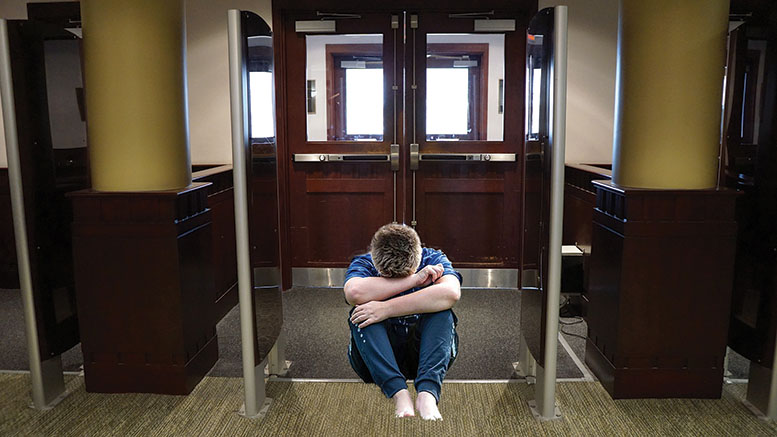[Disclaimer: This article was originally published for April Fools’ Day, and it should not be interpreted as factual reporting.]
“I just don’t know what’s going to happen to me when I step through.”
These are the words of sophomore Marty Jones as he stands in the library lobby, glancing nervously at the row of gray plastic anti-theft alarms.
Jones is not the only student to experience uneasiness when faced with the task of leaving the library. For many, the anti-theft alarms are a symbol of uncertainty and stand as a looming threat. Students at random are victimized by the high-pitched screeching of this security mechanism. Often, they have not even pulled a book from the shelves of Hoover Library by the time they leave.
Students like this don’t understand the reason they become targets. “Honestly, it did not even occur to me that there were actual books in here until I was accused of stealing one last month,” Jones says. “So I’m obviously innocent. Why me?”
To make matters worse, students singled out by the alarms have more to cope with than just the piercing beeps. In most cases they have to stop and turn around, and search anxiously for a librarian to whom they can assert their innocence. This reaction disrupts the flow of traffic behind them, and they often receive confused and sometimes suspicious glances from other students. Some even develop a syndrome that causes them to believe they have accidentally taken a book when in fact this is untrue.
Not even bystanders are left unaffected. Jones recalls running into the backpack of a student who was targeted and stopped suddenly. “My face hit a really hard textbook and a couple people laughed. I was embarrassed for at least five whole minutes.”
Jones has since come to terms with his embarrassing experience, but is still wary of the alarms. He takes a deep breath anyway and finally walks through. He crosses over safely. Next time, however, is uncertain.





